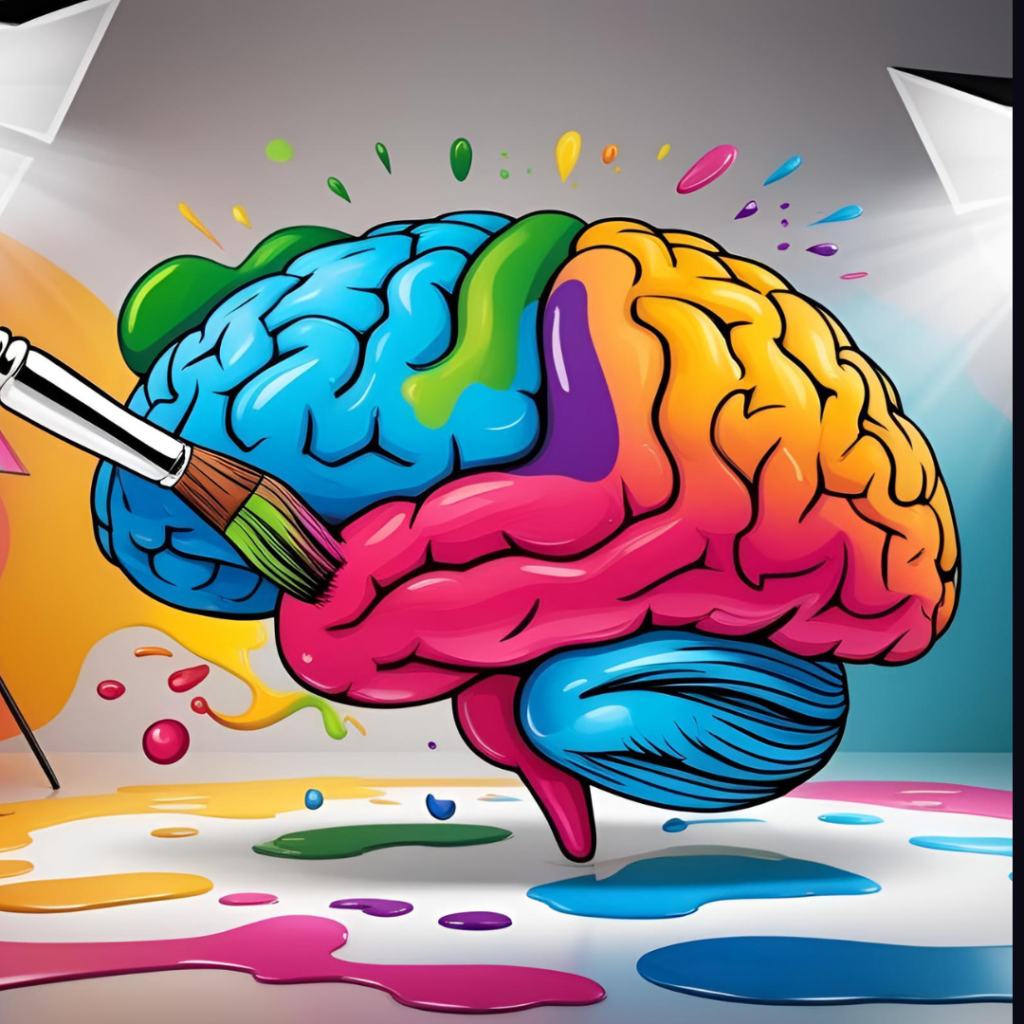Rewire Your Brain: Debunking the Myth of the Fixed Adult Brain

Ever heard the saying, “You can’t teach an old dog new tricks?” Well, we’re here to tell you that when it comes to your brain, that’s a total myth, because you absolutely can rewire your brain! For far too long, it’s been assumed that adult brains are pretty much “set in stone.” But what if we told you that this long-held belief simply isn’t true? You can learn new things, change old habits, and unlock your full potential at any age. So, let’s explore that myth about the fixed adult brain and see how you can reshape your mind and life.
The Myth: The Fixed Adult Brain
For much of the last century, mainstream science was definitive: as adults, our brains are fixed. This belief wasn’t just about neural pathways, it was rooted in the powerful concept of genetic determinism. The dominant view held that our genes were the ultimate blueprint, setting in stone not only our physical traits but also our intelligence, behaviours, and even our capacity for change. If your genetic code was your destiny, then it followed logically that your brain’s wiring, your beliefs, and your behaviours were largely unchangeable too.
This perspective was reinforced by early neuroscience. Influential figures like Santiago Ramón y Cajal, the so-called founder of modern neuroscience, famously declared in 1928, “In adult centres the nerve paths are something fixed, ended, immutable. Everything may die, nothing may be regenerated.” For decades, this harsh decree echoed through scientific circles and society, painting a bleak picture: once childhood ended, so did our brain’s capacity for growth and adaptation.
The dominance of genetic determinism made us, in effect, victims of our heredity. If genes dictated everything, then meaningful change, whether in our brains, our habits, or our potential, was out of reach. This outlook left little room for the environment, experience, or personal effort to make a difference. As a result, the myth of the fixed adult brain became deeply entrenched, shaping how generations understood learning, healing, and self-development.
Thankfully, modern science has since shattered these firmly held misconceptions, revealing a far more hopeful and empowering reality: our brains are dynamic, adaptable, and capable of remarkable change at any age.
Ancient Wisdom Knew It First
For centuries, ancient traditions and indigenous cultures have understood that the brain and mind are not fixed. Practices like meditation, chanting, breathwork, ritual, and creative expression have long been used to foster adaptability, resilience, and personal growth. These approaches, central to traditions from India, Egypt, Greece, and Native American cultures, were designed to help people adapt, learn, and thrive, even in the face of challenge or change.
Indigenous perspectives also offer a holistic view of brain health, emphasising the importance of community, connection to nature, and cultural rituals in supporting cognitive flexibility and lifelong learning. These practices are not just about individual wellbeing, they are woven into the fabric of culture, helping people of all ages adapt, remember, and grow throughout life.
So, while the language may have changed, the core wisdom remains: humans have always had ways to shape the mind and brain. Modern science is finally catching up, explaining in its own terms – neuroplasticity – what ancient wisdom has known all along.
Introducing Neuroplasticity: Your Brain’s Capacity for Change
You’ve probably noticed that the word “neuroplasticity” is everywhere these days. It’s often described as the brain’s superpower, credited with everything from instant genius to miraculous healing. But with all this buzz, it’s easy for myths and misunderstandings to creep in. So, let’s separate the wheat from the chaff and get real about what neuroplasticity actually is, and what it isn’t.
What Neuroplasticity Is Not
First, let’s clear up some common misconceptions and things that get wrongly attributed to neuroplasticity:
- It’s not instant transformation. Neuroplasticity doesn’t mean you can rewire your brain overnight or unlock “hidden” abilities with a single meditation or brain-training app.
- It’s not limitless. The brain’s ability to change is powerful, but it’s not magic. There are real constraints such as age, genetics, injury, and environment all play a role in how much and how quickly change can happen.
- It’s not “using 100% of your brain.” The myth that we only use 10% of our brain, and that neuroplasticity unlocks the rest, has been thoroughly debunked. We use all parts of our brain, just not all at once.
- It’s not a cure-all. While neuroplasticity supports recovery and adaptation, it doesn’t mean every brain injury or disorder can be fully reversed.
- It’s not just positive change. Neuroplasticity can reinforce bad habits, negative thinking, or unhelpful patterns just as easily as it can support positive change, growth and healing.
What Neuroplasticity Actually Is
Neuroplasticity is the brain’s natural ability to reorganise itself by forming new neural connections throughout life. This ability is what allows us to:
- Learn new skills and information – from languages to instruments to new ways of thinking.
- Recover from setbacks – such as relearning functions after a stroke or injury, though this is usually gradual and requires dedicated effort.
- Adapt to change – like adjusting to new environments, routines, or challenges.
- Reinforce habits – both good and bad, depending on what we practise and repeat.
But here’s the real magic: neuroplasticity is not automatic. It’s driven by focused, repeated practice and meaningful experience over time. You can’t just wish your way to a new brain. You have to work at it, whether that’s through learning, therapy, mindfulness, or creative pursuits.
The Bottom Line
Neuroplasticity is a genuine superpower, but it’s not a shortcut or a miracle. It’s the foundation for lifelong learning, personal growth, and recovery, but it works best when we understand its real strengths and limits. By knowing what neuroplasticity can and cannot do, we can use it wisely to curate the life and mind we want, one intentional step at a time.
Spotlight on Dr Tara Swart: Practical Neuroscience for Everyday Life
The understanding of neuroplasticity has been revolutionised by the work of neuroscientists like Dr. Tara Swart. A Neuroscientist and author Dr Swart has played a key role in bringing the science of neuroplasticity into everyday conversation. In her best-selling book, The Source, she explores how we can harness the brain’s ability to change by working with our thoughts, habits, and beliefs.

Dr Swart’s approach is refreshingly practical. She draws on both cutting-edge neuroscience and ancient wisdom, showing how tools like mindfulness, meditation, visualisation, journaling, and gratitude can help us rewire our brains for growth and resilience. She often reminds us, “What you focus on grows,” highlighting the importance of conscious intention in shaping our neural pathways.
Some of the areas Dr Swart covers include:
- How to break unhelpful habits and form new, positive ones
- The science behind visualisation and why it works
- The link between stress, self-care, and brain health
- How to use gratitude and journaling to support change
- The role of belief and mindset in unlocking neuroplasticity
All areas we here at The Alchemy of Being wholeheartedly support and undertake ourselves.
As Dr Swart puts it:
“You are not stuck with the brain you were born with. Through focused attention and practice, you can literally rewire your mind.”
If you’d like to dive deeper into her work, find her here:
- Instagram: @drtaraswart
- LinkedIn: Dr Tara Swart
- Website: taraswart.com
- Book: The Source on Amazon UK
Dr Swart’s insights remind us that with the right tools and mindset, we all have the power to shape our brains, and our lives, at any age.
Neuroplasticity in Action: Your Toolbelt for Life
At Alchemy of Being, we believe everyone needs to curate their own “Toolbelt for Life”. That means gathering a diverse set of practices and modalities to support your unique journey. Many of these tools harness the power of neuroplasticity to help you “curate yourself” and create lasting positive change. Here are just a few examples from our Wellness Wiki:
- Mindfulness and Meditation: Regular practice has been shown to increase grey matter in areas of the brain linked to learning, memory, attention, and emotional regulation. Mindfulness strengthens neural pathways for focus, compassion, and self-awareness, supporting resilience and adaptability.
- Hypnotherapy: Hypnotherapy taps into the subconscious mind, helping you reprogram limiting beliefs and behaviours. By visualising your goals and reinforcing positive suggestions in a relaxed, focused state, you create new neural associations, making it easier to break old patterns and embrace new possibilities.
- Belief Change Modalities (e.g. Psych-K, Emotion Code, Havening): These approaches work directly with the subconscious to shift ingrained beliefs and emotional responses. By intentionally accessing and updating these deep-seated neural pathways, you leverage neuroplasticity to create new, supportive ones. Ones that help you align your thoughts, feelings, and actions with your chosen intentions.
- Creative Expression (Art, Music, Writing): Engaging in creative activities stimulates new neural connections and promotes cognitive flexibility. Whether you’re painting, playing music, or journaling, creativity helps you explore new perspectives, express emotions, and keep your brain adaptable and vibrant.
Your toolbelt is unique to you. The key is to find practices that resonate, support your growth, and make use of your brain’s natural ability to change at any stage of life.
Conclusion: Your Brain, Your Canvas
The myth of the fixed adult brain is just that – a myth. Ancient wisdom, Modern science, and everyday experience all show that your brain is alive with possibility, ready to adapt and grow at any age. Neuroplasticity means you are never stuck; you have the power to learn, heal, and reinvent yourself, no matter where you are on your journey.
At Alchemy of Being, we see your brain as a living canvas. Every thought, habit, and intention is a brushstroke, shaping who you are and who you become. The tools you choose are yours to blend and refine as you curate your unique path.
So, don’t wait for change to find you.
Pick up your toolbelt, embrace your brain’s natural adaptability, and start painting the life you truly want.
The journey never ends, and your potential is limitless.

 Skip to content
Skip to content
